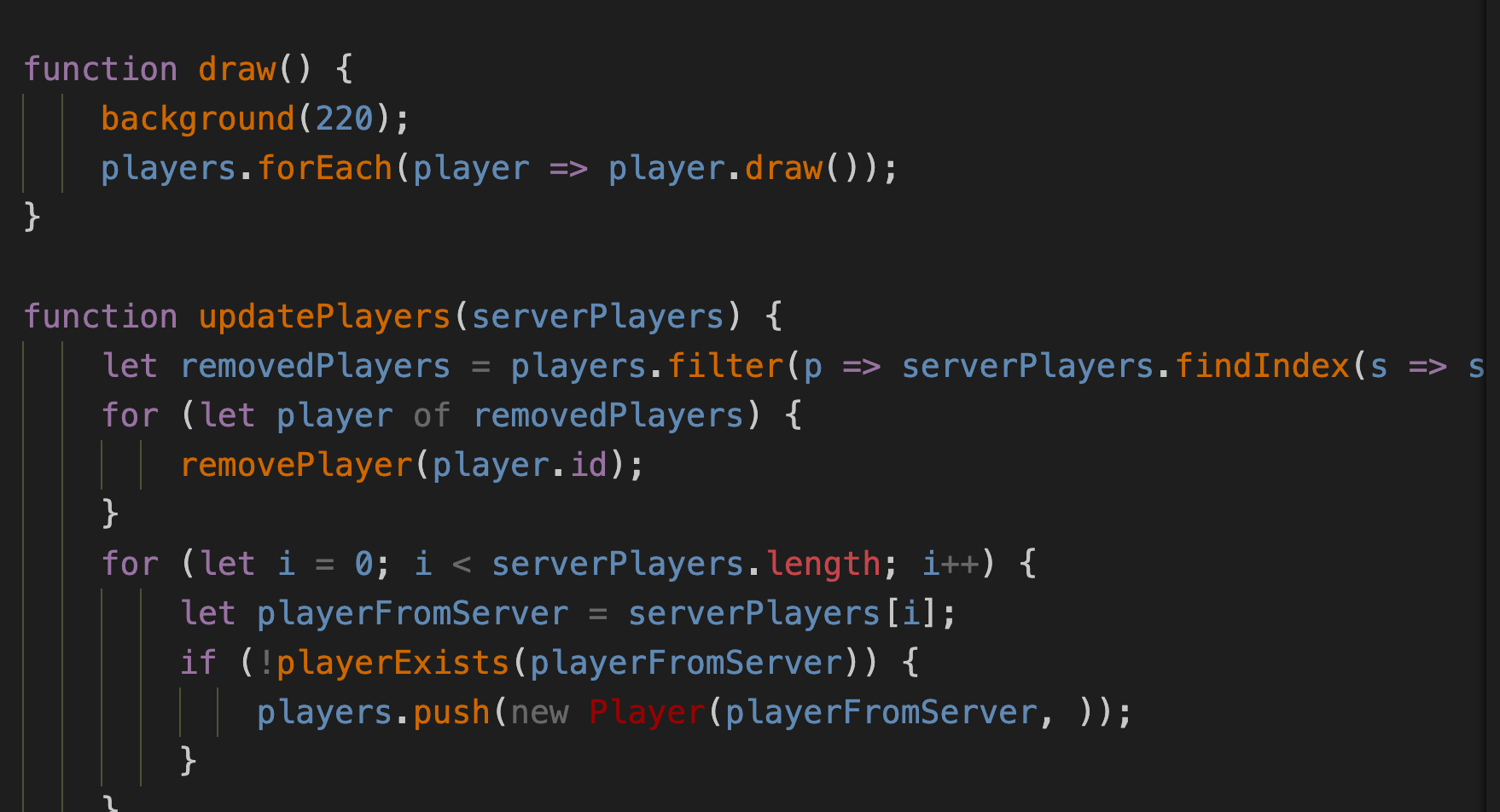W1-p5 WebRTC & “Beyond Being There”
P5 WebRTC
The interactions take place on a fixed video webpage, though communicating the users’ movements within the webcam, fails to provide the feeling of “getting closer to each other” due to the fixed landscape. This real-time video interaction is designed for close relationships (friends, lovers, relatives). The aim of the interaction is to let users feel closer to the distanced ones through actively moving their online video frames closer to the others. What’s more, users can record their best moments with a click, as though taking a picture in the real world.
Demo
Saved JPG:

Process
When making the interactions, I met two problems: a) I cannot the two users’ movements, and b) the movements only happened on one browser.
I looked online for instructions. I found a package that supports multiplayer’s real-time movements on the web at codehair.com. I downloaded it and tried to fit it into my project.


No error message appeared. But the player was not drawn and I couldn’t figure out why. Due to the time limit, I decided to limit the interaction to one side of the user. Another improvement I will make is to add optional anonymity to both of the video frames, so that users can choose to hide their physical appearance when they want to.
Future Improvement
To solve the problems, I will learn about and utilize the RTCDataChannel, so that I can separate the users’ movements and make the translated position updated on both of the browsers.
Reading Response
Jim Hollan and Scott Stornetta use the analogy of “crutches and shoes” to show the current dilemma of telecommunications research (120). They point out that the alternative, online communication tools that we are building are “crutches rather than shoes”, which can only compensate for the “imperfect, unnatural” communication (distanced, non-face-to-face) rather than enhancing the “natural and perfect” communication (face-to-face) (120). This brings two problems to the telecommunication research: 1) our building on the tool is geared toward the wrong direction – building a crutch; 2) our research is centered on imitation rather than improvement. The authors argue that “the imitation will never be as good as the real thing” (119,121). They in turn proposed that we should emphasize strengthening the new medium’s special features (“asynchronous communication, anonymous communication, and to automatically archive communication”) rather than achieving better synchronization(121). In other words, we should develop a new medium that does what physically proximate reality cannot, rather than making a copy of the reality as similar to the reality as possible.
I agree with the authors on their argument that we should not just focus on imitating reality, and that the online experiences shouldn’t be a substitution for the physical reality, but a supplement that adds to it. This is very important to keep in mind as we move towards the future of metaverse. No matter how “real” the virtual spaces can become (even though the authors argue that the virtual world and physical world can never be close enough to each other), the physical reality is not to be forgotten or abandoned, since we still have a large part of ourselves belong to that physical world.